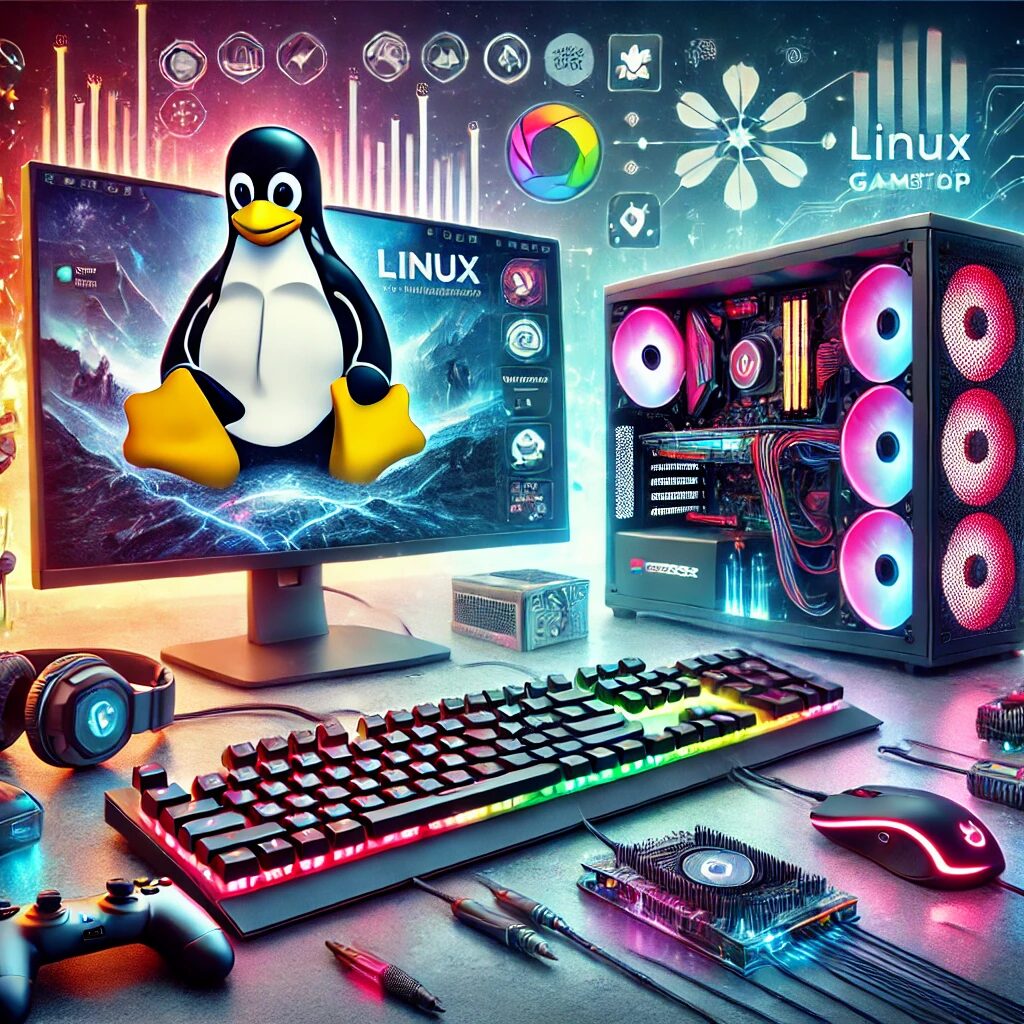1. Choose Compatible Hardware
CPU
- High-Performance Options: AMD Ryzen 7/9 or Intel Core i7/i9.
- Budget Options: AMD Ryzen 5 or Intel Core i5.
GPU
- Best Performance: NVIDIA RTX 30-series or AMD Radeon RX 6000-series.
- Good Performance: NVIDIA GTX 1660 Super or AMD Radeon RX 5600 XT.
- Note: NVIDIA cards generally have better driver support on Linux.
Memory
- Recommended: At least 16GB of DDR4 RAM.
- High-End: 32GB or more if you plan on multitasking or streaming.
Storage
- Primary Drive: NVMe SSD (500GB or more) for the OS and key games.
- Secondary Drive: Additional SSD or HDD for extra storage.
Motherboard
- Compatibility: Ensure it supports your chosen CPU and GPU.
- Features: Look for good VRM cooling, plenty of USB ports, and PCIe slots.
Power Supply
- Quality: A reliable PSU with at least 80+ Gold certification.
- Wattage: At least 650W, higher if you have high-end components.
Cooling
- Air Cooling: High-quality air coolers like Noctua NH-D15.
- Liquid Cooling: AIO liquid coolers if you prefer quieter operation.
2. Choose a Linux Distribution
- Popular Choices:
- Ubuntu: User-friendly, good community support, PPA availability for gaming drivers.
- Pop!_OS: Designed for gaming, comes with NVIDIA drivers pre-installed.
- Manjaro: Based on Arch, rolling release, good for advanced users.
3. Install and Configure the OS
- Install the Linux Distribution:
- Download the ISO from the official website.
- Create a bootable USB drive using tools like Rufus or Etcher.
- Boot from the USB drive and follow the installation instructions.
- Update the System:
sudo apt update && sudo apt upgrade -y - Install Graphics Drivers:
- NVIDIA:
sudo add-apt-repository ppa:graphics-drivers/ppa
sudo apt update
sudo apt install nvidia-driver-xxxReplace
xxxwith the latest driver number. - AMD:
sudo apt install mesa-utils
- NVIDIA:
4. Optimize for Gaming
- Install Game Launchers and Platforms:
- Steam: Available in most repositories.
sudo apt install steam - Lutris: Helps manage games from different platforms.
sudo add-apt-repository ppa:lutris-team/lutris
sudo apt update
sudo apt install lutris
- Steam: Available in most repositories.
- Enable Gaming Mode:
sudo apt install gamemode - Configure Vulkan:
sudo apt install vulkan-utils
5. Install and Configure Additional Software
- Proton (for Steam):
Proton allows Windows games to run on Linux.
Enable it in Steam under Settings > Steam Play.
- Wine:
Allows you to run Windows applications.
sudo apt install wine - DXVK:
Translates DirectX calls to Vulkan.
sudo apt install dxvk - Discord: Popular for gaming communication.
sudo apt install discord
6. Maintenance and Tips
- Regular Updates:
sudo apt update && sudo apt upgrade -y - Backup Your System:
Use tools like Timeshift for system snapshots.
sudo apt install timeshift - Monitor System Performance:
Tools like
htopandglancescan help you keep an eye on system performance.sudo apt install htop glances
By following these steps, you can build a powerful Linux gaming desktop that can handle the latest games and provide a smooth gaming experience.


